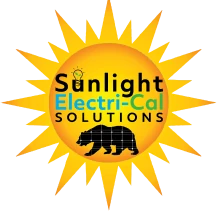As the world shifts toward cleaner energy solutions, the solar energy industry is expected to continue its rapid growth through 2025 and beyond. Solar power has already proven itself as a key player in reducing carbon emissions and addressing climate change, and ongoing advancements in technology and government support are set to accelerate its adoption even further. At Sunlight Electrical Solutions, serving Dublin, CA, we’re keeping an eye on the emerging trends and innovations that will shape the future of solar energy. Here’s a look at the most significant solar energy trends for 2025 and how they are likely to impact both residential and commercial solar installations.
Continued Growth in Solar Installations Worldwide
The global push for renewable energy is driving unprecedented growth in solar energy installations. By 2025, experts predict that solar energy will account for a larger portion of the world’s electricity production, contributing significantly to the reduction of greenhouse gas emissions.
Solar Power Capacity Expansion: According to the International Energy Agency (IEA), global solar capacity is expected to reach 2.3 terawatts (TW) by 2025, a sharp increase from the 849 gigawatts (GW) of installed capacity recorded in 2021. This represents a near-tripling of global solar capacity in just four years.
Residential Solar Growth: Solar panel installations for residential homes will continue to rise as the cost of solar technology decreases and homeowners seek energy independence. With advances in technology and attractive incentives, the affordability of solar systems will improve, making it accessible to more consumers.
Commercial and Utility-Scale Solar Expansion: Large-scale solar farms and commercial installations will also experience significant growth, driven by the demand from corporations and governments looking to meet sustainability goals and achieve carbon neutrality.
This growth will be particularly evident in states like California, where solar energy adoption is already widespread, and new legislation continues to incentivize clean energy.
Innovations in Solar Panel Efficiency and Technology
One of the most exciting trends for 2025 is the ongoing improvement in solar panel technology, which is expected to lead to higher efficiency rates and better performance. Researchers and manufacturers are focusing on creating more efficient, durable, and cost-effective solar panels that can generate more electricity from the same amount of sunlight.
Next-Generation Solar Panels: Emerging technologies, such as tandem solar cells and perovskite solar cells, are poised to revolutionize the solar industry. These advanced cells can achieve efficiency rates above 30%, compared to the current average of 17% to 22% for traditional monocrystalline panels. This means more energy output from fewer panels, benefiting homeowners and businesses with limited roof space.
Bifacial Solar Panels: By 2025, bifacial solar panels are expected to become more common in both residential and commercial installations. These panels are capable of capturing sunlight from both sides, significantly increasing overall energy production. As prices for bifacial panels decrease, they are likely to be adopted widely due to their ability to maximize energy generation, especially in areas with reflective surfaces like concrete or snow.
Improved Durability and Lifespan: Solar panels will continue to see improvements in durability and lifespan, with some panels projected to last well beyond 30 years. Manufacturers are also developing materials and coatings that enhance performance in various climates, including extreme heat, cold, or saltwater environments.
These advancements will make solar power even more efficient and reliable, reducing the cost per watt of energy generated and providing a more compelling case for solar investment.
Energy Storage and Grid Integration
As more homes and businesses adopt solar energy, the ability to store excess power and ensure a reliable energy supply will become increasingly important. By 2025, energy storage solutions and grid integration will be a major focus in the solar industry, allowing users to maximize the benefits of solar energy, even during periods of low sunlight or grid outages.
Advanced Battery Storage Systems: Battery storage technology is evolving rapidly, and by 2025, we can expect significant advancements in both capacity and affordability. Lithium-ion batteries, currently the most common storage solution, will continue to improve, offering higher energy density and longer lifespans. Meanwhile, solid-state batteries, which are more energy-dense and safer, are expected to hit the market, further revolutionizing the solar storage landscape.
Grid Modernization and Smart Grids: In many areas, aging energy infrastructure is struggling to keep up with the growing number of solar installations. By 2025, advancements in smart grid technology will allow for better integration of solar energy into the existing grid. Smart grids can dynamically manage energy flow, ensuring that surplus solar energy is efficiently distributed or stored for later use.
Energy Independence and Backup Power: With improved storage systems, homes and businesses will have the ability to store excess energy generated during the day and use it during the evening or during power outages. This energy independence will be particularly valuable in areas like California, where rolling blackouts and high energy costs have driven demand for reliable backup power.
As energy storage technology advances, solar energy users will have more control over their power supply, allowing for greater flexibility and resilience in the face of fluctuating energy needs.
Policy Support and Solar Incentives
Government policy plays a critical role in the adoption of solar energy, and by 2025, ongoing legislative support at both the federal and state levels will continue to make solar power a financially viable option for consumers.
Extension of Federal Solar Investment Tax Credit (ITC): The Solar Investment Tax Credit (ITC), which offers a 30% tax credit for residential and commercial solar installations, has been a major driver of solar adoption. As it is set to continue through 2032, this incentive will remain a key factor in making solar more affordable and attractive to homeowners and businesses.
State-Level Incentives and Mandates: States like California will continue to offer additional incentives, such as the Self-Generation Incentive Program (SGIP), which provides rebates for solar battery storage systems. Moreover, California’s commitment to 100% clean energy by 2045 means continued support for solar installations at the state level, with new policies likely to emerge to encourage residential and commercial adoption.
Solar Mandates for New Construction: By 2025, more states are expected to follow California’s lead in requiring solar panels for new residential construction. In 2020, California became the first state to mandate that all new homes include solar panels, and similar legislation may be enacted across other states as solar becomes a standard feature in homebuilding.
These policies, coupled with favorable net metering laws, will continue to encourage the growth of solar energy adoption, making it an increasingly mainstream energy solution.
The Role of Solar in Sustainability and Decarbonization Goals
By 2025, the role of solar energy in combating climate change and supporting sustainability goals will be more critical than ever. Governments, corporations, and individuals are setting aggressive decarbonization targets, and solar energy is a key component in achieving these goals.
Corporate Solar Adoption: Many large corporations have committed to achieving net-zero emissions by 2030, and solar energy is a central part of their sustainability strategies. By 2025, we can expect to see more commercial solar installations as businesses seek to reduce their carbon footprints and meet sustainability targets.
Community Solar Programs: Solar energy will become more accessible through community solar programs, which allow multiple households to share the benefits of a single solar installation. These programs are particularly beneficial for renters or homeowners who cannot install solar panels on their own property. By 2025, community solar programs will be more widespread, providing clean energy access to a larger portion of the population.
Solar’s Role in Global Decarbonization: Globally, solar energy will continue to play a major role in efforts to decarbonize the energy sector. Solar is expected to account for nearly half of the renewable energy capacity added in the coming years, as nations work to reduce reliance on fossil fuels and transition to cleaner energy sources.
As the world grapples with the challenges of climate change, solar energy will be a leading force in reducing greenhouse gas emissions, driving sustainability initiatives, and ensuring a cleaner, more resilient energy future.
The Future of Solar Energy
Looking ahead to 2025, the solar energy industry is set to experience unprecedented growth and innovation. From more efficient solar panels to advancements in energy storage and government policies, solar energy will become an even more integral part of the global energy landscape. For homeowners and businesses in Dublin, CA, and beyond, now is the perfect time to explore solar energy solutions and prepare for a future powered by the sun.
At Sunlight Electrical Solutions, we’re committed to helping our clients stay ahead of these trends and take full advantage of the opportunities solar energy provides. Whether you’re looking to reduce your energy costs, increase energy independence, or contribute to a more sustainable future, we’re here to guide you every step of the way.







